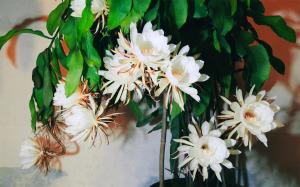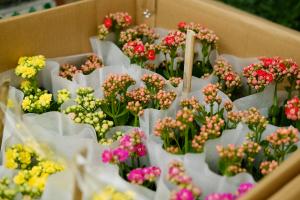What Kind of Rocks for Potted Plant Drainage?
When it comes to keeping potted plants healthy, one of the most important factors to consider is proper drainage. No matter what type of plant you are growing, it needs to be able to drain excess water away from the roots and soil. This is where rocks come in handy.
Types of Rocks for Potted Plant Drainage
Not all rocks are created equal when it comes to drainage. Some rocks are more porous and will allow water to flow more freely, while others will hold onto moisture and can actually hinder drainage. Some of the best types of rocks for potted plant drainage include:
Pea Gravel
Pea gravel is a small, round rock that is perfect for plant drainage. It is relatively lightweight, so it won't weigh down your potted plant, but it is also heavy enough to keep soil in place. Pea gravel is porous, which means that it will help to keep your plant's roots from becoming waterlogged.
Pumice
Pumice is a volcanic rock that is lightweight and porous. It is perfect for potted plants because it doesn't break down easily and can be reused over and over again. Pumice is also great for plants that need a lot of drainage, like succulents and cacti.
Perlite
Perlite is a type of volcanic rock that is mined and then heated until it expands. Like pumice, it is lightweight and porous, making it ideal for potted plant drainage. Perlite is also very affordable, so it is a great choice for gardeners on a budget.
River Rocks
River rocks are larger and heavier than pea gravel, but they are still a good choice for plant drainage. They are often used in aquaponics systems because they are able to hold onto beneficial bacteria that can help to keep plants healthy.
How to Use Rocks for Potted Plant Drainage
Now that you know about the different types of rocks that are good for potted plant drainage, it's important to know how to use them properly. Here are the steps:
Add a layer of rocks to the bottom of your pot
Add a layer of landscaping fabric on top of the rocks (optional)
Add your potting soil on top of the rocks and fabric
Plant your potted plant as usual
By following these steps, you will ensure that excess water is able to drain away from your potted plant's roots and soil, which will help to prevent overwatering and root rot. Additionally, the rocks at the bottom of your pot will also help to stabilize your plant and keep it from tipping over.
Conclusion
The right type of rocks are essential for potted plant drainage. By choosing porous rocks like pea gravel, pumice, perlite, or river rocks, you can help to keep your potted plants healthy and thriving. Just be sure to use the rocks correctly, following the steps outlined above, and your plants will have everything they need to grow strong and beautiful.

 how many times do yo...
how many times do yo... how many planted tre...
how many planted tre... how many pine trees ...
how many pine trees ... how many pecan trees...
how many pecan trees... how many plants comp...
how many plants comp... how many plants can ...
how many plants can ... how many plants and ...
how many plants and ... how many pepper plan...
how many pepper plan...































